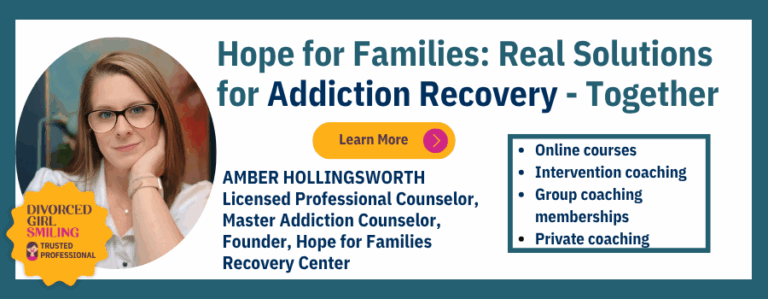If you’re frustrated and wondering how to help an addict, whether that’s your spouse, ex-spouse, child, family member or friend, you’ve probably been given the same old advice over and over again:
- Use tough love and let them hit rock bottom.
- Stage a dramatic intervention.
- Or do nothing and hope they eventually want to change.
But what if there was a better, smarter fourth option in helping an addict? An approach that doesn’t wreck your relationship or your sanity, but still moves your loved one toward recovery.
Here are some ways you might have been told will help an addict:
Option #1: The Tough Love Approach
You’ve probably heard this one before: “Kick them out. Cut them off. Let them hit bottom.” It’s been the go-to strategy for decades. And while it can seem empowering at first, here’s the truth:
Tough love has a high emotional cost—and a low success rate.
Let’s be real: addiction continues despite consequences. That’s the definition of addiction. At the same time, natural consequences can play a role in helping someone see the problem, but going full-on tough love often backfires.
A Real-Life Example: When Tough Love Doesn’t Work
Take Susan and her son Jake (not their real names). After years of trying to help Jake—who had been using drugs since his teens—Susan finally had enough. She kicked him out, thinking a few hard nights would force him to seek treatment.
But Jake didn’t go to rehab. He chose homelessness over help. And when Susan finally heard from him months later, after a near-fatal overdose, he was angry and bitter, not grateful or motivated to change.
Eventually, Jake did get sober, but not because of tough love. A stranger built a relationship with him through a community outreach program and earned his trust. That connection—not consequences—led Jake to real recovery.
Bottom Line: If you’re going to use tough love, don’t do it out of rage or desperation. And never bluff it. You may end up damaging your relationship beyond repair.
Option #2: The Big TV-Style Intervention
You’ve seen it: family members read letters in a circle, emotions run high, the addicted person agrees to treatment, and everyone hugs. In some cases, traditional interventions work, especially when the person knows they have a problem but just can’t stop. They can be a lifeline when someone’s in crisis, acting recklessly, or in danger of dying.
But… they come with baggage.
Drawbacks of the Traditional Intervention:
- The addicted person may feel betrayed and humiliated, leading to deep resentment.
- They may enter treatment but relapse quickly, especially if they haven’t fully accepted the problem.
- Long-term trust between family members can be permanently damaged.
These interventions are best saved for emergencies, when doing nothing would be worse. But even then, be prepared for pushback—and know it might not lead to lasting change.
Option #3: The Invisible Intervention (The Smart, Research-Based Approach)
Now let’s talk about the most effective, evidence-backed strategy:
The Invisible Intervention.
This approach uses techniques from the CRAFT method (Community Reinforcement and Family Training) and adds advanced communication strategies to help someone come to their own conclusion about needing help.
It’s called “invisible” because the addicted person doesn’t even realize it’s happening. No confrontation, no staged ambush, no ultimatums. Just smart, consistent influence.
Why the Invisible Intervention Works:
- It’s twice as effective as traditional intervention or tough love.
- It preserves your relationship.
- It leads to lasting change because the person makes the decision themselves.
- It’s designed for those early stages of denial—also called the pre-contemplation stage—where most people get stuck.
Instead of pushing someone to act before they’re ready, the Invisible Intervention helps them recognize the consequences, test out solutions, and eventually decide that real recovery is possible—and necessary.
The Best Way to Help an Addict: Invisible Intervention
I created the Invisible Intervention program because I wanted to help people who are “in denial” move through the stages of change without ruining family bonds in the process.
In the Invisible Intervention, I show families how to:
- Stay five steps ahead of addiction
- Use positive reinforcement and neutral responses
- Avoid power struggles and emotional blowups
- Lead the addicted person toward self-motivated recovery
My clients, those dealing with addiction, often walk into sessions already saying, “I’ve got a problem, and I want help.”
That’s the power of this strategy. No one is forced. They want to change.
Which Strategy Should You Use?
| Strategy | Best For | Drawbacks |
|---|---|---|
| Tough Love | When nothing else works & you need distance | Often fails, damages trust, leads to resentment |
| Traditional Intervention | Crisis situations when the person knows there’s a problem | High emotional fallout, potential relapse |
| Invisible Intervention | Early-stage denial, relationship-focused recovery | Requires patience and consistency—but it works |
Final Thoughts: Use Strategy, Not Desperation
Helping a loved one with addiction isn’t about being soft or enabling—it’s about being strategic. If you’re tired of playing emotional roulette with someone else’s addiction, the Invisible Intervention might be exactly what you need. It’s compassionate. It’s effective. And it puts you back in control of your situation without blowing up your relationship.





















